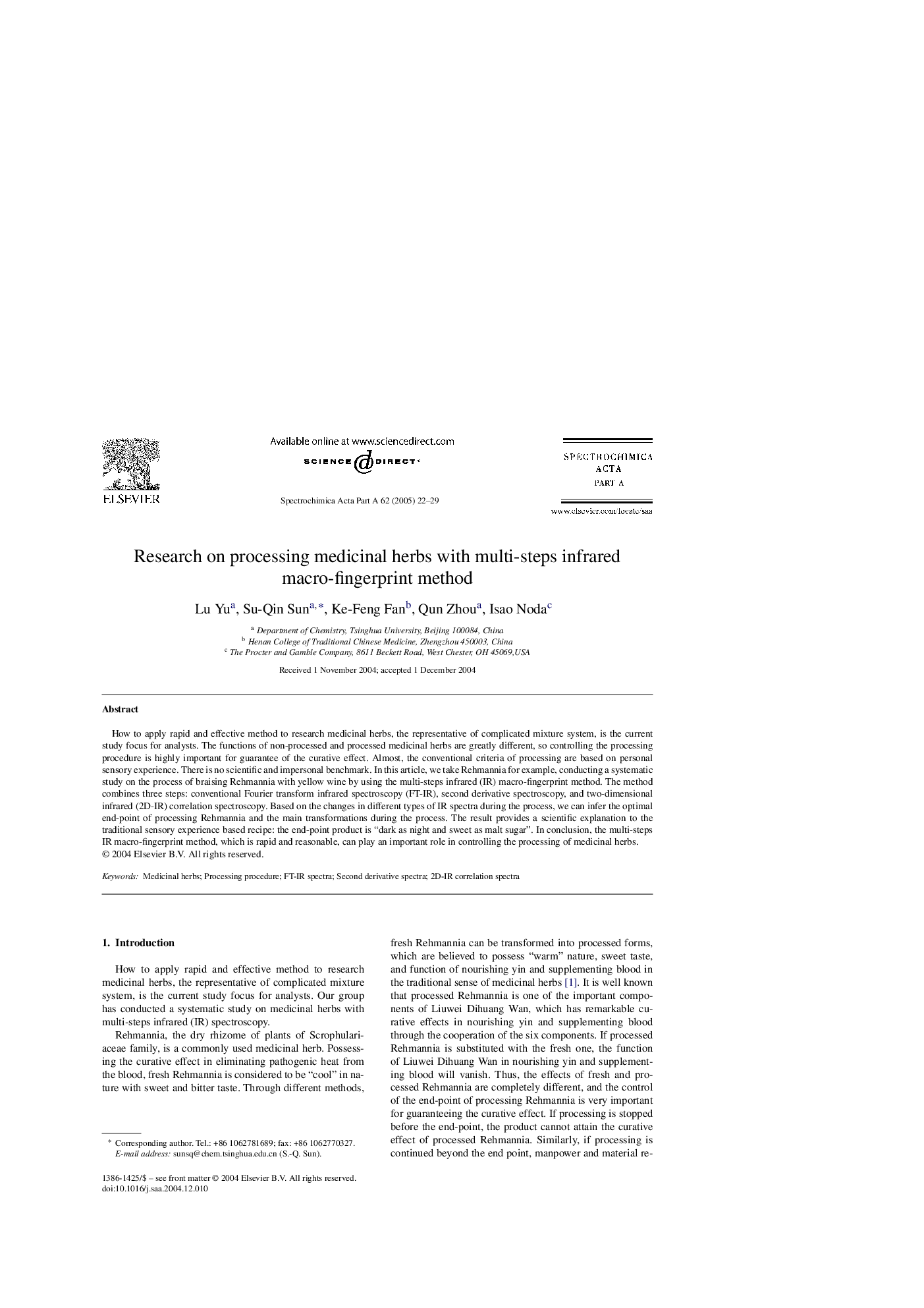| Article ID | Journal | Published Year | Pages | File Type |
|---|---|---|---|---|
| 9756982 | Spectrochimica Acta Part A: Molecular and Biomolecular Spectroscopy | 2005 | 8 Pages |
Abstract
How to apply rapid and effective method to research medicinal herbs, the representative of complicated mixture system, is the current study focus for analysts. The functions of non-processed and processed medicinal herbs are greatly different, so controlling the processing procedure is highly important for guarantee of the curative effect. Almost, the conventional criteria of processing are based on personal sensory experience. There is no scientific and impersonal benchmark. In this article, we take Rehmannia for example, conducting a systematic study on the process of braising Rehmannia with yellow wine by using the multi-steps infrared (IR) macro-fingerprint method. The method combines three steps: conventional Fourier transform infrared spectroscopy (FT-IR), second derivative spectroscopy, and two-dimensional infrared (2D-IR) correlation spectroscopy. Based on the changes in different types of IR spectra during the process, we can infer the optimal end-point of processing Rehmannia and the main transformations during the process. The result provides a scientific explanation to the traditional sensory experience based recipe: the end-point product is “dark as night and sweet as malt sugar”. In conclusion, the multi-steps IR macro-fingerprint method, which is rapid and reasonable, can play an important role in controlling the processing of medicinal herbs.
Related Topics
Physical Sciences and Engineering
Chemistry
Analytical Chemistry
Authors
Lu Yu, Su-Qin Sun, Ke-Feng Fan, Qun Zhou, Isao Noda,
